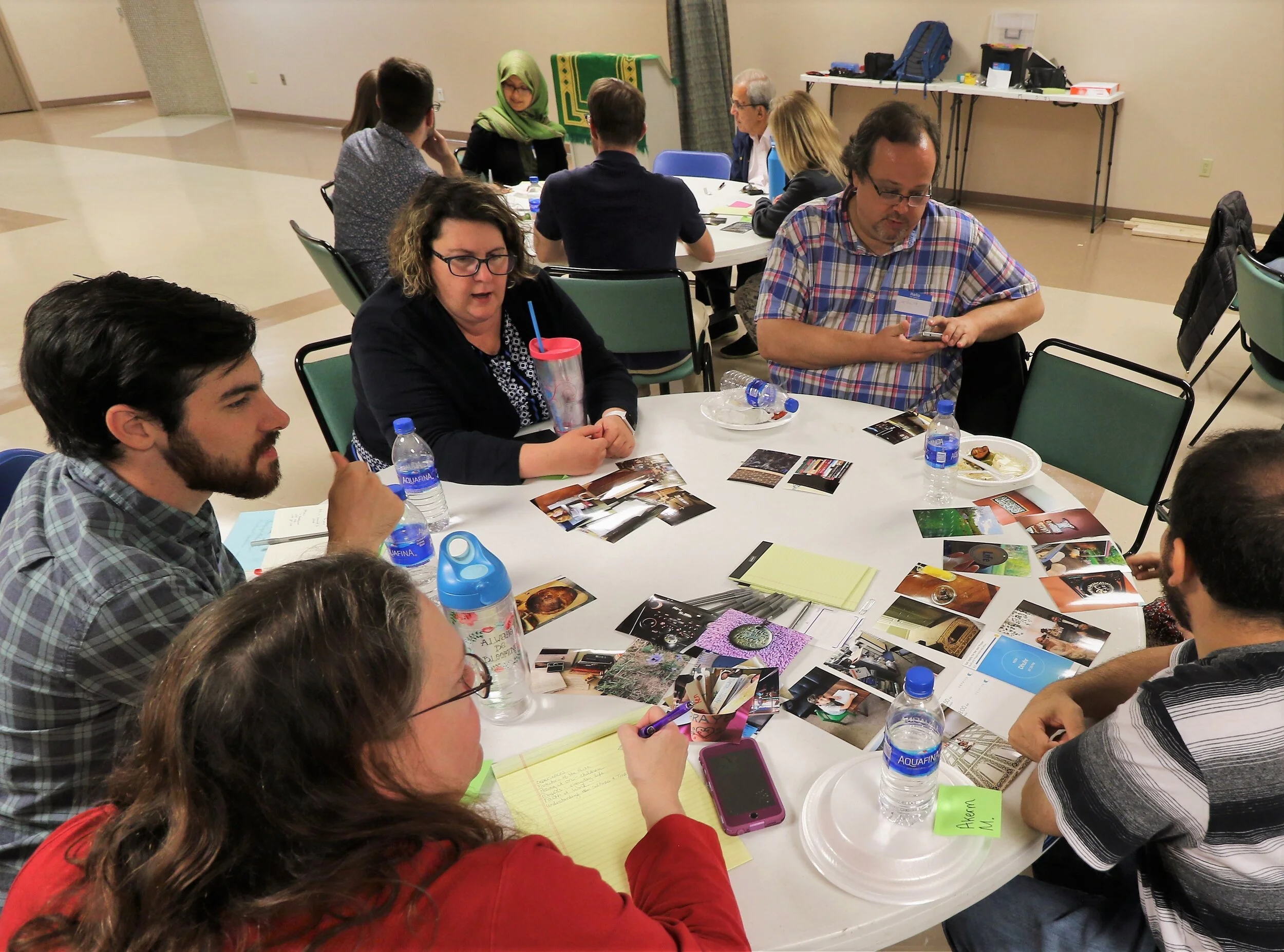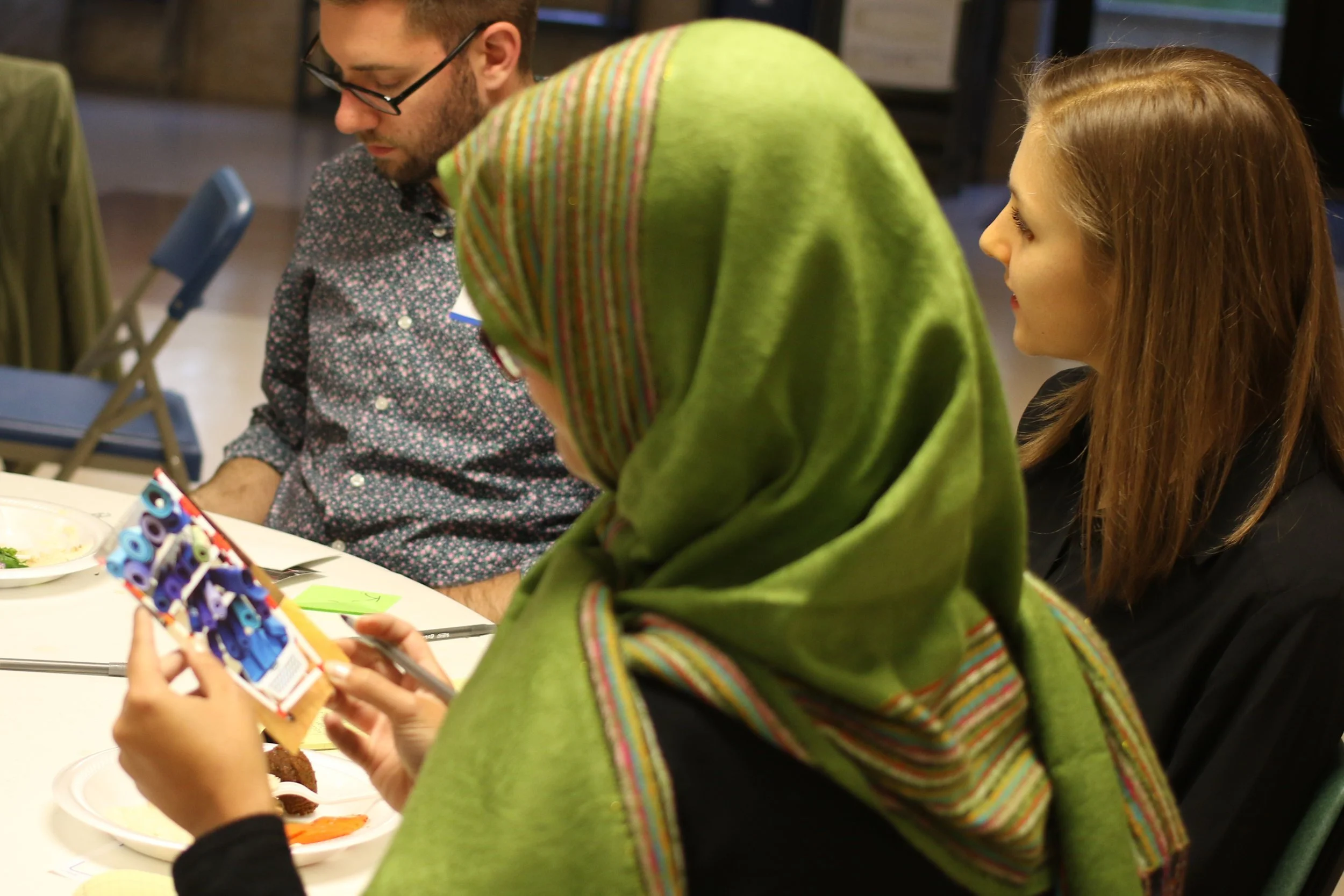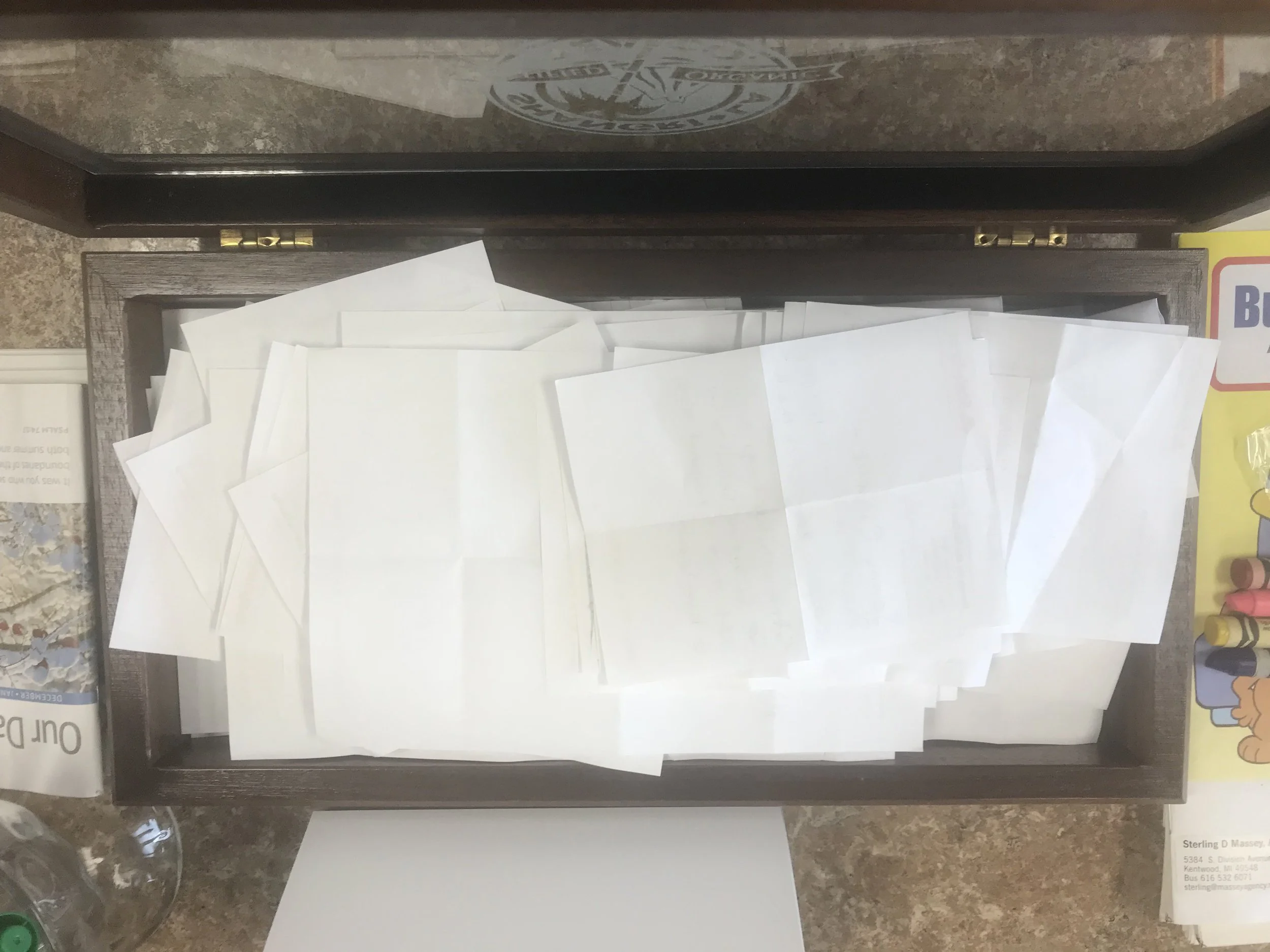Facilitating Understanding through Photographs
By Roman R. Williams, Ph.D.
If you are like most Americans, you carry a mobile phone with you wherever you go—in fact, you may be reading this piece on your smartphone. It is also likely that you frequently use your cell phone to snap and share photographs. People use these images to document their lives and communicate with others. I recently texted my teenage daughter to ask what she was up to and she replied, not with words, but with a photograph. After all, a photograph is worth a thousand words, right? Since photos are able to communicate meanings, we can learn a lot about each other by scrolling through our camera rolls. What would your photos reveal about your everyday life?
Photo 1. Participants discussing photos about faith in everyday life.
The idea that photos convey narratives is the starting point for an innovative approach to interfaith dialogue called photovoice. In interfaith photovoice, we bring together groups of people from different religious backgrounds to explore faith in everyday life through amateur photography and small group conversations. Participants commit to five meetings that unfold over the course of several weeks and use their own photographs to have conversations about faith. In each meeting, participants use their photographs to discuss faith in everyday life, including the challenges they face and the changes they would like to see in their community. At the end of a project, participants work together to select photographs for a public exhibition. And in this way, they extend their conversations and engage the broader community with their experiences, insights, and concerns.
Photo 2. Photographs add rich layers of description to our conversations.
As a facilitator, I’ve watched people from different faith backgrounds learn a great deal from one another, form new friendships, and develop empathy. Last fall, I watched this happen with a group of two dozen Muslims and Christians who met at the At-Tawheed Islamic Center in Grand Rapids, Michigan. One example of this was a conversation in which Christians were enthralled by a Muslim’s photos showing the challenge of fitting daily prayer into their life at work. As the conversation unfolded, he described the ways coworkers help him create space to pray. He also described the challenges of being faithful in a culture that is not structured around Muslim prayer times. This prompted a Christian woman to share a photo of a box of prayer requests (photo below) that sits on the conference table at her work, a private business that is not officially affiliated with Christianity, but owned by a Christian. She described how people in her office pray for their clients. As they exchanged descriptions of their respective prayer practices, visual narratives about Muslims and Christians being faithful in prayer at work garnered a new appreciation and deepened connections. The experiences were unfamiliar until we discussed them. As far as I know, Muslims don’t have prayer request boxes (nor do very many Christians or workplaces for that matter). Likewise, most Christians are unfamiliar with what is involved in daily Muslim prayers and how challenging it can be to be faithful. By combining verbal descriptions with photographs, these unfamiliar worlds became more easily understood. And Muslims and Christians built a deeper appreciation for a practice (prayer) that they share in common, even if their practices are different.
Photo 3. A box full of clients’ prayer requests.
Photovoice is known as a participatory action research method, which is a fancy way of saying that the goal of photovoice is not entirely academic. In fact, the first order of business is to build understanding by empowering people with a process to explore experiences, needs, and concerns in their community. This is where photovoice gets its name: using photos to give voice to people’s narratives in a way that generates insights that impact communities. Where many approaches to interfaith dialogue are top-town, photovoice provides a bottom-up, grassroots approach to interfaith understanding. Since people of faith carry cameras wherever they go (in the form of a smartphone), photography represents a new opportunity for interfaith dialogue.
Acknowledgement
This resource originally appeared as an Interfaith Insight for the Kaufman Interfaith Institute’s weekly blog and was published in the Grand Rapids Press (January 31, 2019). The original is available at https://www.gvsu.edu/interfaith/photovoice-exhibition-97.htm.



